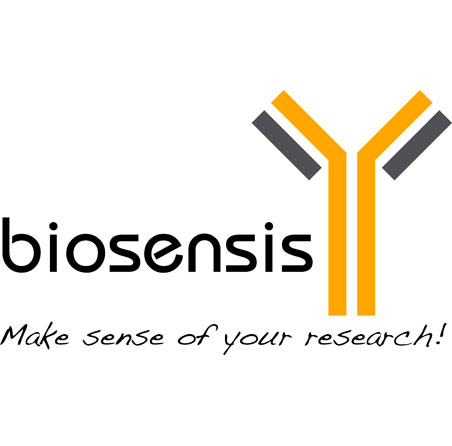Ancient ubiquitous protein 1 (AUP1), Sheep Polyclonal Antibody
As low as
US$317.00
Only %1 left
Catalog Number
S-035
- Product Name Ancient ubiquitous protein 1 (AUP1), Sheep Polyclonal Antibody
- Product Description Sheep anti-Ancient ubiquitous protein 1 (AUP1) Polyclonal Antibody (Unconjugated), suitable for WB, IHC-Frozen.
- Alternative Names AUP1
- Application(s) IHC-Frozen, WB
- Antibody Host Sheep
- Antibody Type Polyclonal
- Specificity This antiserum is specific for ancient ubiquitous protein 1. This antibody is known to react with bovine, sheep, human and rat ancient ubiquitous protein 1. Other species have not yet been tested.
- Species Reactivity Bovine, Human, Rat, Sheep
- Immunogen Description A synthetic peptide (HVFLVSCALPDSV) corresponding to the amino acids 48-60 of human ancient ubiquitous protein 1 conjugated to Blue carrier protein has been used as the immunogen. The peptide is homologous with the corresponding sequence derived from bovine, mouse and rat.
- Conjugate Unconjugated
- Purity Description Whole serum
- Regulatory Status For research use only.
Product Info
- Product Description Sheep anti-Ancient ubiquitous protein 1 (AUP1) Polyclonal Antibody (Unconjugated), suitable for WB, IHC-Frozen.
- Application(s) IHC-Frozen, WB
- Application Details IHC, WB. Use at a dilution of 1:500 to 1:6000. This antiserum works superbly in both paraffin embedded and frozen tissues. Biosensis recommends optimal dilutions/concentrations should be determined by the end user.
- Target Ancient ubiquitous protein 1 (AUP1)
- Specificity This antiserum is specific for ancient ubiquitous protein 1. This antibody is known to react with bovine, sheep, human and rat ancient ubiquitous protein 1. Other species have not yet been tested.
- Target Host Species Human
- Species Reactivity Bovine, Human, Rat, Sheep
- Antibody Host Sheep
- Antibody Type Polyclonal
- Antibody Isotype Mixed
- Conjugate Unconjugated
- Immunogen Description A synthetic peptide (HVFLVSCALPDSV) corresponding to the amino acids 48-60 of human ancient ubiquitous protein 1 conjugated to Blue carrier protein has been used as the immunogen. The peptide is homologous with the corresponding sequence derived from bovine, mouse and rat.
- Purity Description Whole serum
- Format Lyophilized
- Reconstitution Instructions Spin vial briefly before opening. Reconstitute in 100 µL sterile-filtered, ultrapure water. Centrifuge to remove any insoluble material.
- Storage Instructions After reconstitution keep aliquots at -20°C for a higher stability, and at 2-8°C with an appropriate antibacterial agent. Glycerol (1:1) may be added for an additional stability. Avoid repetitive freeze/thaw cycles.
- Batch Number Please see item label.
- Expiration Date 12 months after date of receipt (unopened vial).
- Alternative Names AUP1
- Uniprot Number Q9Y679
- Uniprot Number/Name Q9Y679 (AUP1_HUMAN)
- Scientific Background AUP1 contains a domain with homology to the ancient conserved region of the archain 1 gene and a domain thay may be involved in binding ubiquitin-conjugating enzymes. The unprocessed precusor is of 476 amino acids in length and has an estimated molecular weight of 53 kDa. ALTERNATIVE PRODUCTS: 2 named isoforms produced by alternative splicing.TISSUE SPECIFICITY: Ubiquitous. SIMILARITY: Belongs to the AUP1 family. SIMILARITY: Contains 1 CUE domain.
- Shipping Temperature 25°C (ambient)
- UNSPSC CODE 41116161
- Regulatory Status For research use only.
Specifications
-
General References
Wilkinson, K.D. et al. J. Biol. Chem. 256, 9235-9241, (1981)
Schwartz, A.L. et al. Annu. Rev. Med. 50, 57-74, (1999)
Coux, O., et al. Annu. Rev. Biochem. 65, 801-847, (1996)
Strausberg R.L, et al. Proc. Natl. Acad. Sci. U.S.A. 99:16899-16903(2002).
Jang W, et al. Genomics 36:366-368(1996).
Shibata K, et al. Genome Res. 10:1757-1771(2000).
Carninci P, et al. Genome Res. 10:1617-1630(2000).
Kawai J, et al. Nature 409:685-690(2001).
Okazaki Y, et al. ature 420:563-573(2002).
Carninci P, et al. Science 309:1559-1563(2005).

 1800 605-5127
1800 605-5127 +61 (0)8 8352 7711
+61 (0)8 8352 7711
